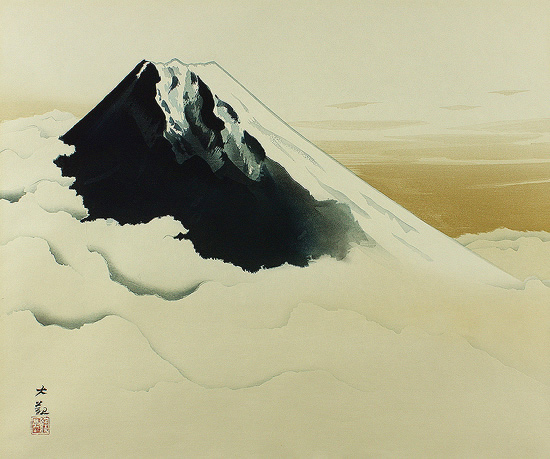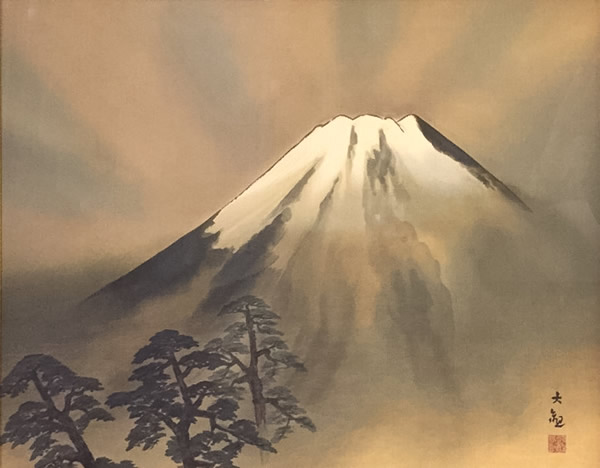Home > Artists > Kazuo SHIRAGA > Splendid
Kazuo SHIRAGA
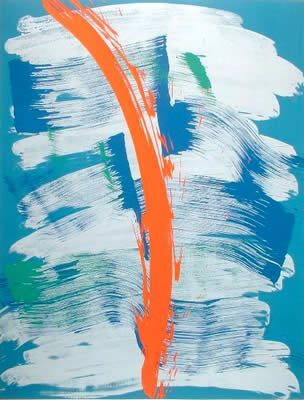 |
||
| Item ID | ■ | 4000-15011001 |
| Title | ■ | Splendid |
| Category | ■ | silkscreen |
| Theme | ■ | abstract |
| Year | ■ | 1990 |
| Image size | ■ | 84.5*64.5cm |
| Remark | ■ | ed60, signed |
| Market Price : 200000JPY |
| Currency Converter |
| Please click the following "Request a Free Estimate" button for our price with shipping. |
 |
| Inquiry |
Kazuo SHIRAGA Biography
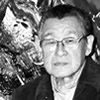 1924 Kazuo SHIRAGA was born in Amagasaki, west of Osaka, as the only son in a traditional kimono merchant family.
1924 Kazuo SHIRAGA was born in Amagasaki, west of Osaka, as the only son in a traditional kimono merchant family.
1937 Entered Hyogo Prefectural Amagasaki Middle School and began to read the first translations of classical Chinese literature.
1938 His father’s interest in oil painting inspired Kazuo SHIRAGA to paint in oil and he attends a yoga (Western-style painting) club established by a newly arrived art teacher at his school.
1942 Kazuo SHIRAGA entered Kyoto Municipal Special School of Painting and majored in Nihonga (traditional Japanese painting).
1944 Kazuo SHIRAGA was drafted to the Imperial Army and trained in Osaka, but never deployed abroad.
1945 After the end of World War II, Shiraga returned to a student’s life.
1946 Shiraga suffered from pneumonia and rheumatic fever and almost dies; he was subsequently confined to bed for six months. Akira Kanayama gave Shiraga two art books by Usaburo Toyama.
1948 Kazuo SHIRAGA married Fujiko Uemura and graduated from Kyoto Municipal School of Painting. He studied with local painter Tsuguro Ito, who encouraged him to submit his works to the annual salon of Shin-Seisaku Kyokai (New Production Association).
1951 Jiro Yoshihara viewed the work of Jackson Pollock at a special room of the Yomiuri Independent Exhibition, when it toured from Tokyo to Osaka; Shiraga also most likely saw the work there.
1952 Genbi, short for Gendai Bijutsu Kondankai (Contemporary Art Discussion Group), was founded. Kazuo SHIRAGA and his peers attended its meetings and showed in its annual exhibition.
Kazuo SHIRAGA established Zero-kai (Zero Society) with Saburo Murakami and Akirab Kanayama. Atsuko Tanaka joined later.
1953 Kazuo SHIRAGA made his first abstract paintings with a palette knife. Thereafter he adopted the blood-red pigment of crimson lake and began making paintings directly with his hands and fingers.
1954 Kazuo SHIRAGA made his first foot paintings.
Kazuo SHIRAGA and Murakami held a two-person exhibition at the Hangkyu Department Store, Osaka. Shiraga’s foot paintings were exhibited in Zero Society’s group exhibition displayed in a store window of the Sogo Department Store, Osaka.
Gutai Art Association (Gutai Bijutsu Kyokai) was formed by Jiro Yoshihara. Gutai member Shozo Shimamoto visited Zero Society with an invitation for the leading members to join Gutai.
1955 Kanayama, Murakami, Shiraga and Tanaka joined Gutai.
Yoshihara organized Experimental Outdoor Modern Art Exhbition to Challenge the Burning Midsummer Sun in Ashiya Park near the Ashiya River.
1st Gutai Art Exhibition was held at the Ohara Kaikan, Tokyo. Shiraga executed Challenging Mud three times.
Kazuo SHIRAGA began to write about his art to contribute to the journal Gutai.
1956 Yoshihara organized special demonstrations and the exhibition One Day Only Outdoor Exhibition.
Gutai organized Outdoor Art Exhibition at Ashiya Park.
Kazuo SHIRAGA created his first extant large foot painting on paper.
Geijutsu Shincho published The Gutai Art Manifesto, commissioned by Yoshihara.
1957 Gutai Art on the Stage was presented in Osaka and Tokyo. Kazuo SHIRAGA presented Sanbaso-Super Modern, dancing on stage; he also shot arrows at a large canvas.
After receiving a copy of the journal Gutai, Michel Tapié traveled to Japan with Georges Mathieu and Toshimitsu Imai and associated Gutai with his own Art Informel movement.
1958 International Art of a New Era: Informel and Gutai, organized by Tapié and Yoshihara opened in Osaka and tours four Japanese cities. Tapié turned the Gutai portion of the exhibition into a group show at Martha Jackson Gallery, New York. It toured to several museum venues in the US and Canada.
Kazuo SHIRAGA signed a contract with Tapié, consigning works to him for sale in Europe.
At the suggestion of Tapié, Shiraga started to paint on canvas and sign his name in kanji (Japanese characters). He also began to use the names of the Suikoden warriors to identity his paintings, which had previously been left untitled merely as Work.
1966-1970 Kazuo SHIRAGA’s production of large-scale paintings decreased markedly. He all but abandoned foot painting and produced a number of “fan paintings” and “squeeze paintings”, in the latter of which he made use of his feet and a wood rod or plate.
1971 Kazuo SHIRAGA ceased painting completely and began training at the Tendai-sect Buddhist temple Enryakuji on Mount Hiei. He was given the monk name Sodo (Simple Path)
1972 Jiro Yoshihara died and Gutai disbanded.
Kazuo SHIRAGA resumed painting and began experimenting with extremely liquid alkyd paint.
1973 Kazuo SHIRAGA used a predominantly black-and-white palette and alkyd paint and produced a lyrically explosive group of new paintings. His titles further diversified to include references to history and Esoteric Buddhism.
1986 Kazuo SHIRAGA traveled to Europe for the first time for a solo exhibition at Galerie Stadler, Paris and Japon des Avant-gardes 1910-1970 at Musée Nationale d’Art Moderne, Centre Georges Pompidou, Paris.
2002 Kazuo SHIRAGA was awarded the Osaka Art Price.
2008 Passed away in Amagasaki.
If you have any questions, please fill out the following inquiry form.
| Inquiry Form |

 Japanese Painting Gallery is an online art gallery dedicated to Japanese painting, Kakejiku, Ukiyoe, and so on. You can always find quality artworks and service.
Japanese Painting Gallery is an online art gallery dedicated to Japanese painting, Kakejiku, Ukiyoe, and so on. You can always find quality artworks and service. Payment can be made via PayPal using your credit card. Please log in your PayPal account and check out.
Payment can be made via PayPal using your credit card. Please log in your PayPal account and check out. Japanese Painting Gallery stocks thousands of magnificent artworks to satisfy all of your needs.
Japanese Painting Gallery stocks thousands of magnificent artworks to satisfy all of your needs.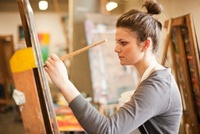 Japanese Painting Gallery sells your artworks to all over the world.
Japanese Painting Gallery sells your artworks to all over the world.